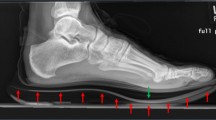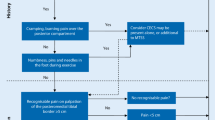Abstract
Preoperative skin sterilization, disinfection, and fracture reduction are all necessary for surgeries of the fractured lower extremity. This procedure requires several medical personnel, even though its tasks are relatively simple. Therefore, development of an assistant device for the preoperative disinfection and the simple fracture reduction is required as an alternative. To obtain the design specifications of the equipment, we evaluated lifting and traction forces using the lower extremities of Korean fresh cadavers. The lifting force was measured when each leg was lifted from the table using 39 Korean fresh cadavers. The same method was applied to measure the traction force on a femoral fracture model using 22 Korean fresh cadavers. The mean lifting force was 36.8 ± 11.8 N, and the mean traction force was 116.8 ± 37.9 N. Regression analysis yielded the following equations: lifting force = 0.6724*(body weight) - 0.8068, R2 = 0.71; traction force = 1.6880*(body weight) + 18.1495, R2 = 0.57. This study determined the lifting and traction forces, not just the body segment weights. These results will be helpful for developing medical assistant devices.
Similar content being viewed by others
References
Banerjee, S., Kapadia, B. H., and Mont, M. A., “Preoperative Skin Disinfection Methodologies for Reducing Prosthetic Joint Infections,” The Journal of Knee Surgery, vol. 27, no. 4, pp. 283–288, 2014.
CONMED, “AssistArm™-Surgical Limb Positioner,” http://www.conmed.com/en/products/orthopedics/shoulder/accessories/limb-positioning/assistarm-limb-positioner (Accessed 16 APR 2018)
Allen Medical System, Inc., “Portable Orderly Limb Positioner,” https://www.allenmedical.com/catalog/orthopaedic/orthopaedic-products/portable-orderly-limb-positioner (Accessed 16 APR 2018)
Smith&nephew, “Patient Positioning,” http://www.smith-nephew.com/us/professional/products/all-products/patient-positioning/(Accessed 16 APR 2018)
Kim, Y. H. and Le Minh, H., “A Laboratory-Level Surgical Robot System for Minimal Invasive Surgery (MIS) Total Knee Arthroplasty,” International Journal of Precision Engineering and Manufacturing, vol. 12, no. 2, pp. 237–242, 2011.
Damavandi, M., Farahpour, N., and Allard, P., “Determination of Body Segment Masses and Centers of Mass Using a Force Plate Method in Individuals of Different Morphology,” Medical Engineering and Physics, vol. 31, no. 9, pp. 1187–1194, 2009.
De Leva, P., “Adjustments to Zatsiorsky-Seluyanov's Segment Inertia Parameters,” Journal of Biomechanics, vol. 29, no. 9, pp. 1223–1230, 1996.
Dempster, W. T., “Space Requirements of the Seated Operator: Geometrical, Kinematic, and Mechanical Aspects of the Body, with Special Reference to the Limbs,” Wright-Patterson Air Force Base, Ohio: Wright Air Development Center, 1955.
Hanavan Jr, E. P., “A Mathematical Model of the Human Body,” AMRL-TR-64-102, 1964.
Jensen, R. K., “Estimation of the Biomechanical Properties of Three Body Types Using a Photogrammetric Method,” Journal of Biomechanics, Vol. 11, Nos. 8–9, pp. 349–358, 1978.
Wistrand, C., Söderquist, B., and Nilsson, U., “Positive Impact on Heat Loss and Patient Experience of Preheated Skin Disinfection: A Randomised Controlled Trial,” Journal of Clinical Nursing, Vol. 25, Nos. 21–22, pp. 3144–3151, 2016.
Pataky, T. C., Zatsiorsky, V. M., and Challis, J. H., “A Simple Method to Determine Body Segment Masses in Vivo: Reliability, Accuracy and Sensitivity Analysis,” Clinical Biomechanics, vol. 18, no. 4, pp. 364–368, 2003.
Author information
Authors and Affiliations
Corresponding author
Rights and permissions
About this article
Cite this article
Cho, HJ., Kim, S. & Kwak, DS. Evaluations for Lifting and Traction Forces of Low Extremities with Fracture. Int. J. Precis. Eng. Manuf. 19, 925–928 (2018). https://doi.org/10.1007/s12541-018-0109-9
Received:
Revised:
Accepted:
Published:
Issue Date:
DOI: https://doi.org/10.1007/s12541-018-0109-9




